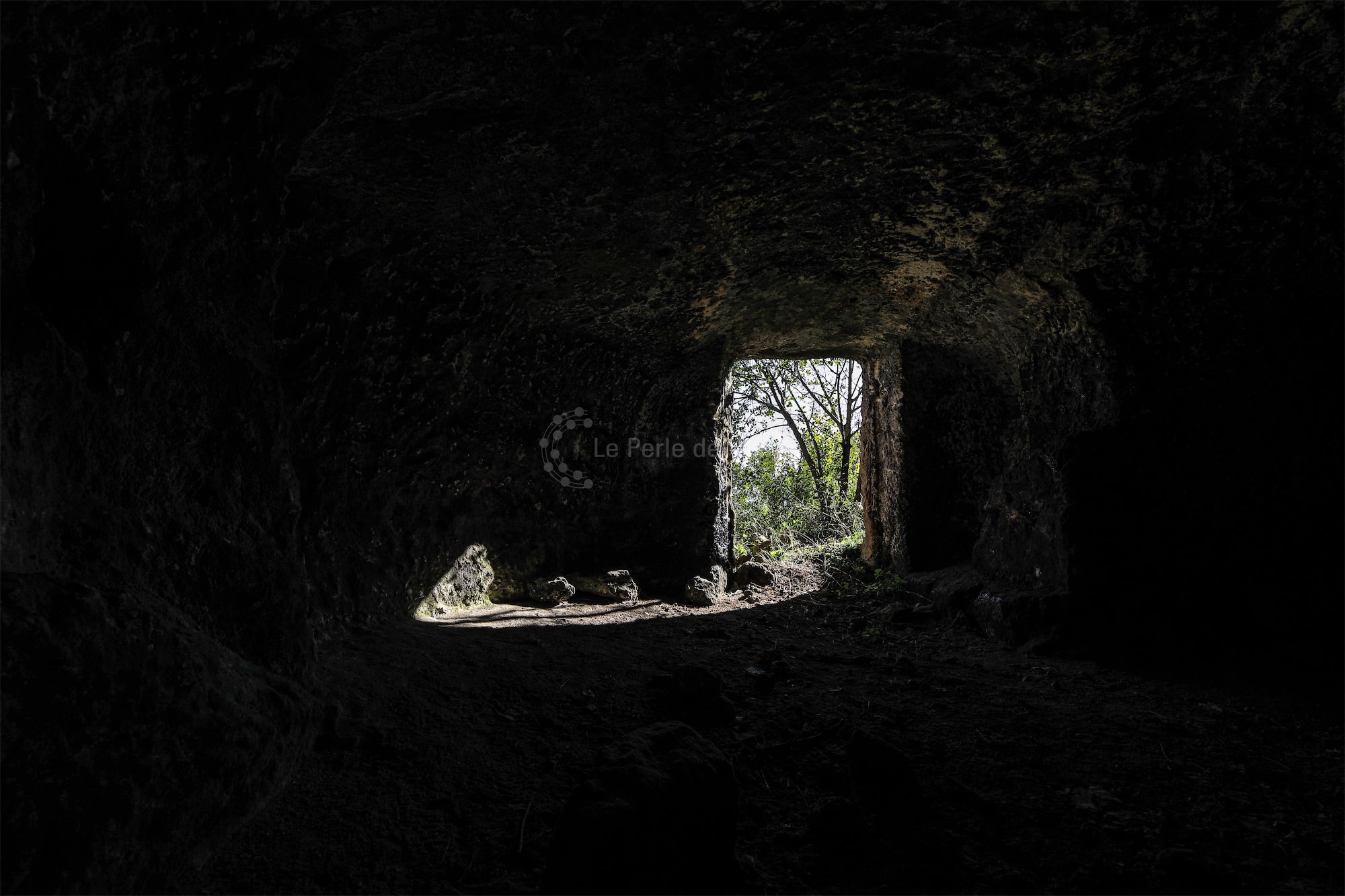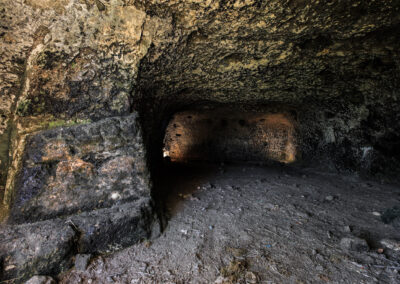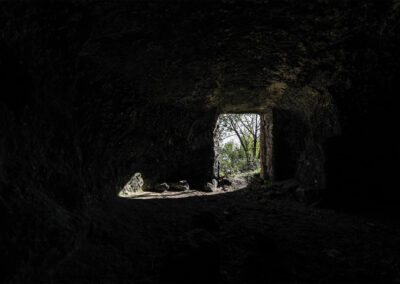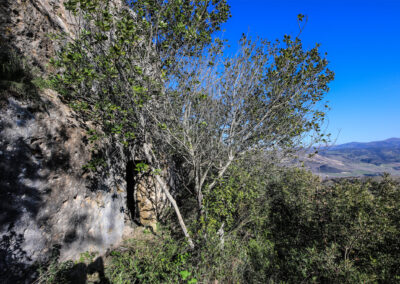
Muros
Domus de janas Rocca ruja
The region of Rocca Ruja in Muros includes the eastern side of the plateau of Su Padru, in the town of Ossi, that faces the valley of Bade Ivos. The “domus” of Rocca Ruja (tn*domus de janas: Neolithic tombs carved into rock called “houses of the fairies”) is a hypogeous tomb with architectural design, a type that is common in a limited area in the province of Sassari, introduced during the Nuragic Age (tn* Bronze Age, 1800-1500 BC). The tomb has a front cut into the rock-face, resembling tombs of giants (tn* Sardinian megalithic gallery graves) and comprises a chamber carved into limestone. The external part has a curved profile and defines the exedra, where the funerary rites took place. The façade has two holes where there used to be two small baetyli (tn*a baetylus is a sacred stone that anciently was supposedly endowed with life, or gave access to a deity). It is a typology that inherits both the features of the domus de janas, underground structures, and of the tombs of the giants, above the ground, resulting in a very peculiar architectural shape. The interior of the site comprises a single room, and both the internal and external parts were tampered with in 1942, when the hypogeum was used as an air raid shelter. The site is geologically characterised by detrital limestone, an organogenic sedimentary rock, belonging to the category of limestone rocks. It is formed out of white limestone, arranged in layers of medium-size that make up a small plateau facing the Mascari valley, with high vertical walls, on top of which the town of Ossi is built. The main component is calcite, with lesser quantities of detritic material, such as quartz clasts and other silicates. Along the rock crag there is a cave that enriches the speleological heritage of Muros: Su Puttu de Rocca Ruja. The cave has two entrances connected to two parallel wells, one of which leads to a small cavity covered in mineral concretions. The length of the grotto is 65 metres, with an overall development of 90 metres and a maximum drop in altitude of 26 metres.
Source: “Muros, a thousand years of history 800-1800” (in Italian) by Gesuino Scano, Town of Muros website.




